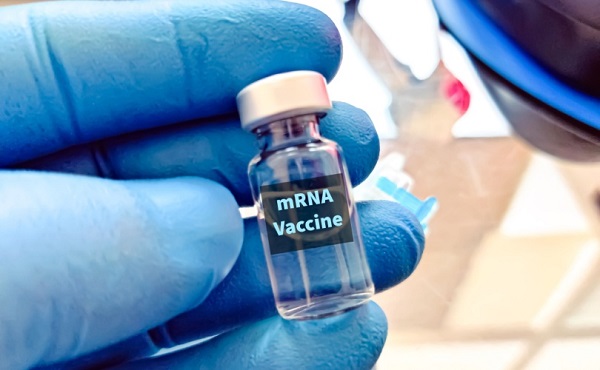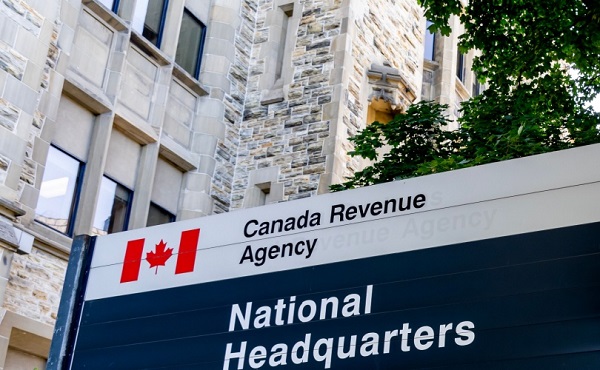Alberta
Come for the camping. Stay for the luxury! Wetaskiwin RV park beats out high end restaurants for “Canada’s Best Restroom”

This article was sent to Todayville.com as a press release from Cintas Canada
Cintas Canada Crowns Westview RV Park Canada’s Best Restroom
Alberta campground awarded $2,500 from Cintas Canada
RV there yet? Cintas Canada, Ltd. is proud to name the Westview RV Park in Wetaskiwin, AB the 2020 Canada’s Best Restroom® winner. The public voted the Westview RV Park the best public washroom in the country, earning it the top prize of a Cintas UltraClean™ restroom cleaning service and $2,500 in Cintas facility services to keep its washrooms Ready for the Workday®. The washrooms will also be honoured with a place in the Canada’s Best Restroom® Hall of Fame.

“We’re blown away by the outpouring of votes to help us earn the title of Canada’s Best Restroom,” said Carol Crick, co-owner and operator, Westview RV Park. “We invested a lot of time into creating clean and comfortable washrooms for our customers. Our luxurious facilities are one of the main reasons travelers choose to stay at our campground.”
The washrooms at the Westview RV Park recently underwent a major makeover. Westview wanted to give its customers the five-star treatment and make them feel comfortable while staying at the park. The epoxy floors are textured for less slips and rounded corners were created for ease of cleaning. Meanwhile, concrete countertops and fancy tile make these the most unbelievable campground washrooms anywhere.

“Travel restrictions due to the COVID-19 pandemic have many Canadians renting or buying an RV for their family getaways,” said Sonia Mendes, Senior Marketing Manager, Cintas Canada. “When travelers visit the Westview campground, they’ll be impressed by the clean and pleasant washroom experience.”
The Westview RV Park’s engagement throughout the contest played a significant role in driving votes for their location. They drove awareness via their social media page as well as participated in several radio, TV and newspaper interviews. Their promotion resulted in thousands of proud employees and caring customers voting for them throughout the contest.

Now in its 11th year, the Cintas Canada’s Best Restroom contest shines a spotlight on businesses that go the extra mile to create the most memorable restrooms imaginable. The contest is open to any non-residential restroom in Canada that is accessible to the public.

The 2020 finalists were selected based on cleanliness, visual appeal, innovation, functionality and unique design elements. Online voting was open to the public from July 13th through August 14th, which produced the following results:
- Westview RV Park – Wetaskiwin, AB
- Bicycle Thief – Halifax, NS
- Hawthorn Dining Room – Calgary, AB
- Yorkdale Shopping Centre – Toronto, ON
- Leña Restaurante – Toronto, ON
For more information about the Canada’s Best Restroom contest, visit www.bestrestroom.com/canada
Alberta
Made in Alberta! Province makes it easier to support local products with Buy Local program

Show your Alberta side. Buy Local. |
When the going gets tough, Albertans stick together. That’s why Alberta’s government is launching a new campaign to benefit hard-working Albertans.
Global uncertainty is threatening the livelihoods of hard-working Alberta farmers, ranchers, processors and their families. The ‘Buy Local’ campaign, recently launched by Alberta’s government, encourages consumers to eat, drink and buy local to show our unified support for the province’s agriculture and food industry.
The government’s ‘Buy Local’ campaign encourages consumers to buy products from Alberta’s hard-working farmers, ranchers and food processors that produce safe, nutritious food for Albertans, Canadians and the world.
“It’s time to let these hard-working Albertans know we have their back. Now, more than ever, we need to shop local and buy made-in-Alberta products. The next time you are grocery shopping or go out for dinner or a drink with your friends or family, support local to demonstrate your Alberta pride. We are pleased tariffs don’t impact the ag industry right now and will keep advocating for our ag industry.”
Alberta’s government supports consumer choice. We are providing tools to help folks easily identify Alberta- and Canadian-made foods and products. Choosing local products keeps Albertans’ hard-earned dollars in our province. Whether it is farm-fresh vegetables, potatoes, honey, craft beer, frozen food or our world-renowned beef, Alberta has an abundance of fresh foods produced right on our doorstep.
Quick facts
- This summer, Albertans can support local at more than 150 farmers’ markets across the province and meet the folks who make, bake and grow our food.
- In March 2023, the Alberta government launched the ‘Made in Alberta’ voluntary food and beverage labelling program to support local agriculture and food sectors.
- Through direct connections with processors, the program has created the momentum to continue expanding consumer awareness about the ‘Made in Alberta’ label to help shoppers quickly identify foods and beverages produced in our province.
- Made in Alberta product catalogue website
Related information
Alberta
Province to expand services provided by Alberta Sheriffs: New policing option for municipalities

Expanding municipal police service options |
Proposed amendments would help ensure Alberta’s evolving public safety needs are met while also giving municipalities more options for local policing.
As first announced with the introduction of the Public Safety Statutes Amendment Act, 2024, Alberta’s government is considering creating a new independent agency police service to assume the police-like duties currently performed by Alberta Sheriffs. If passed, Bill 49 would lay additional groundwork for the new police service.
Proposed amendments to the Police Act recognize the unique challenges faced by different communities and seek to empower local governments to adopt strategies that effectively respond to their specific safety concerns, enhancing overall public safety across the province.
If passed, Bill 49 would specify that the new agency would be a Crown corporation with an independent board of directors to oversee its day-to-day operations. The new agency would be operationally independent from the government, consistent with all police services in Alberta. Unlike the Alberta Sheriffs, officers in the new police service would be directly employed by the police service rather than by the government.
“With this bill, we are taking the necessary steps to address the unique public safety concerns in communities across Alberta. As we work towards creating an independent agency police service, we are providing an essential component of Alberta’s police framework for years to come. Our aim is for the new agency is to ensure that Albertans are safe in their communities and receive the best possible service when they need it most.”
Additional amendments would allow municipalities to select the new agency as their local police service once it becomes fully operational and the necessary standards, capacity and frameworks are in place. Alberta’s government is committed to ensuring the new agency works collaboratively with all police services to meet the province’s evolving public safety needs and improve law enforcement response times, particularly in rural communities. While the RCMP would remain the official provincial police service, municipalities would have a new option for their local policing needs.
Once established, the agency would strengthen Alberta’s existing policing model and complement the province’s current police services, which include the RCMP, Indigenous police services and municipal police. It would help fill gaps and ensure law enforcement resources are deployed efficiently across the province.
Related information
-

 COVID-192 days ago
COVID-192 days agoCOVID virus, vaccines are driving explosion in cancer, billionaire scientist tells Tucker Carlson
-

 Bruce Dowbiggin2 days ago
Bruce Dowbiggin2 days agoIs HNIC Ready For The Winnipeg Jets To Be Canada’s Heroes?
-

 Dr. Robert Malone2 days ago
Dr. Robert Malone2 days agoThe West Texas Measles Outbreak as a Societal and Political Mirror
-

 illegal immigration1 day ago
illegal immigration1 day agoDespite court rulings, the Trump Administration shows no interest in helping Abrego Garcia return to the U.S.
-

 Health2 days ago
Health2 days agoHorrific and Deadly Effects of Antidepressants
-

 2025 Federal Election1 day ago
2025 Federal Election1 day agoConservative MP Leslyn Lewis warns Canadian voters of Liberal plan to penalize religious charities
-

 Education1 day ago
Education1 day agoSchools should focus on falling math and reading grades—not environmental activism
-

 2025 Federal Election1 day ago
2025 Federal Election1 day agoHousing starts unchanged since 1970s, while Canadian population growth has more than tripled






